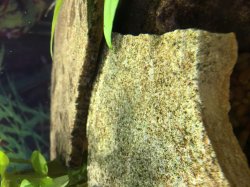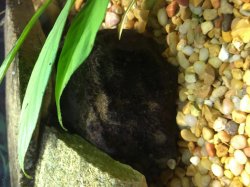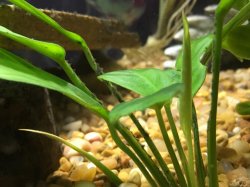If you carefully read through that article that Akasha linked, and the comments following, you can easily see that there are about as many theories as there are possibilities to begin with. The article bears no author's name, and George Farmer now writes for PFK on planted tank matters, and he has countered some of that information. The point is, don't get fooled into thinking there is some cure-all, because there isn't.
Phosphate can cause algae, because as I said, all algae is caused by nutrients in the presence of light. And troublesome algae, like brush/beard, occurs when that balance is not in sync. Excess phosphates is one aspect of an imbalance, as is excessive light, excess iron, too little light, etc.
Adam, I have no experience with LED lighting so I can't suggest what you have is too little or too much. And it would seem you are adding no nutrients (fertilizers) other than the API CO2 Booster, which is not going to help because without other nutrients the CO2 can feed algae; and, the reason this product is often suggested to kill algae is because it is gluteraldehyde which is a highly toxic chemical that in sufficient doses can kill bacteria, plants and fish. In most of our low-tech or natural method planted tanks, there will be sufficient CO2 produced naturally to balance the other nutrients, and hopefully the light. Until you get the balance between light (intensity and duration factor in) and nutrients that is sufficient for the plants you have, you will see troublesome algae.
My previous mention of daylight was not meant to suggest this is your problem, but only meant to indicate that something which might be "insignificant" in our thinking as the increase in daylight during the summer can push the light over the edge. It's all about the balance.
Byron.







 /www.practicalfishkeeping.co.uk/content.php?sid=4085
/www.practicalfishkeeping.co.uk/content.php?sid=4085